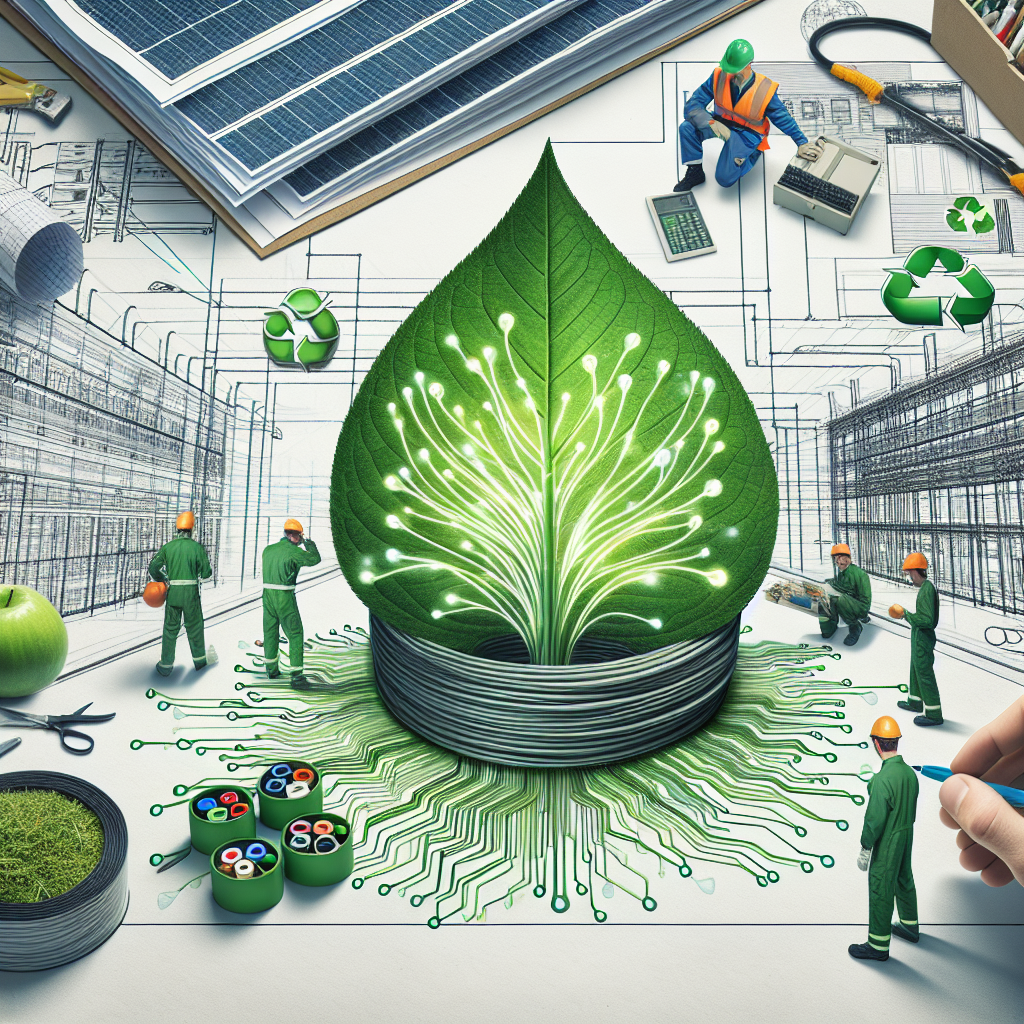As the world becomes increasingly aware of environmental issues, organizations seek ways to minimize their impact. One area where eco-friendly practices can be highly effective is in structured cabling design and installation. This article explores the key eco-friendly practices in structured cabling systems and how they influence sustainability in technology.
Understanding Structured Cabling
Structured cabling refers to a comprehensive cabling system that provides a backbone for telecommunication and data networks, primarily used in commercial buildings. It incorporates a variety of cable types and components to support network communications, including voice, video, and data. The infrastructure is designed to be adaptable, scalable, and cost-effective while maintaining high performance.
Importance of Eco-Friendly Practices in Structured Cabling
The IT infrastructure of an organization can contribute significantly to energy consumption and waste. Adopting eco-friendly practices not only helps in reducing the carbon footprint but also can lead to cost savings and increased efficiency. Here are some of the critical reasons why eco-friendly practices are essential in structured cabling:
-
Energy Efficiency: Eco-friendly cabling materials and installation methods can lead to reduced power consumption. High-quality cables, for example, offer lower resistance, leading to less energy waste.
-
Waste Reduction: Implementing sustainable practices can significantly minimize waste generated from the installation process, including excess cabling and packaging materials.
-
Longevity and Reliability: Eco-friendly cabling solutions often employ better materials that enhance reliability and longevity, leading to fewer replacements and a subsequent reduction in material waste.
- Social Responsibility: Organizations implementing eco-friendly practices demonstrate their commitment to sustainability, which can improve their public image and attract eco-conscious customers.
Eco-Friendly Practices in Structured Cabling Design
1. Material Selection
Using biodegradable or recyclable materials is one of the core practices in eco-friendly structured cabling design. Manufacturers are developing cables made from recyclable plastics and using materials that meet environmental standards.
Example:
- Halogen-Free Cables: These cables emit fewer toxic gases in case of a fire and are easier to recycle compared to traditional cables containing halogens.
2. Efficient Design Principles
A well-thought-out design can significantly reduce waste. Efficient layouts require fewer materials while ensuring the system’s functionality and performance.
Example:
- Use of Modular Systems: Modular cabling systems allow for easy modifications and expansions without needing extensive rewiring, thus minimizing waste and promoting adaptability.
3. Cable Management
Implementing effective cable management solutions aids in organizing and protecting cables, leading to better performance and easy accessibility. Reducing the length of cables used through better management can also decrease waste.
4. High-Performance Cables
Using high-performance cables like Category 6A or 7 cables can ensure faster data transfer speeds and reduce energy consumption. These cables are designed to meet demanding applications, thus optimizing performance.
Eco-Friendly Installation Practices
1. Reduce, Reuse, Recycle
Installation teams can adopt the mantra of "Reduce, Reuse, Recycle." They should plan the installation in such a way as to minimize waste. Reusing existing cabling components whenever possible can help in the reduction of resource consumption.
2. Waste Management and Disposal
During installation, it’s crucial to dispose of materials responsibly. This includes sorting waste into categories—metal, plastic, and other recyclables—so that they can be sent to appropriate recycling facilities.
3. Energy Efficient Tools
Using energy-efficient tools for installation not only minimizes energy usage but also enhances performance. Electric tools that consume less power contribute less to the overall carbon footprint during the installation phase.
4. Training and Awareness
Educating installation teams about eco-friendly practices ensures adherence to sustainable methods. Training on waste management, material selection, and efficient installation techniques can lead to more environmentally responsible installation projects.
5. Remote Management and Monitoring Technologies
In the age of IoT, integrating smart technologies that allow for remote management and monitoring of structured cabling systems can significantly enhance efficiency and reduce the need for physical maintenance, consequently lowering energy consumption.
The Future of Eco-Friendly Cabling
The trends indicating a shift towards sustainability in structured cabling are promising. With technology continually advancing, we can expect improved materials and methods that further enhance eco-friendly practices. As regulations around sustainability tighten, companies that adopt these practices early will likely gain a competitive advantage.
The Role of Standards
Compliance with environmental regulations and standards such as ISO 14001 helps in the adoption of eco-friendly practices. These frameworks guide organizations towards sustainable practices, ensuring that structured cabling systems are designed and installed with minimal environmental impact.
Conclusion
Adopting eco-friendly practices in structured cabling design and installation is no longer just an option; it is a necessity in our increasingly eco-conscious world. By focusing on sustainable materials, efficient designs, and responsible installation methods, organizations can significantly reduce their environmental footprint while improving their operational efficiency. As advancements continue in the field of technology, an eco-friendly ethos will only grow more critical for the structured cabling industry.
FAQ Section
1. What is structured cabling?
Structured cabling is a comprehensive network system that includes cabling infrastructure for telecommunications and data networks in buildings. It consists of various cable types supporting voice, video, and data communication.
2. Why should I invest in eco-friendly cabling practices?
Investing in eco-friendly cabling practices can lead to reduced energy consumption, waste reduction, and enhanced public image due to your commitment to sustainability, which can also result in cost savings.
3. What are halogen-free cables?
Halogen-free cables are made from materials that do not contain halogens, which can emit toxic gases when burned. They are easier to recycle and are considered safer for the environment.
4. What role does cable management play in sustainability?
Effective cable management reduces excess cable usage and waste, enhances accessibility, and improves the overall performance of the network.
5. How can I ensure my installation team employs eco-friendly practices?
You can ensure eco-friendly practices by providing training, promoting awareness about sustainability, and establishing clear guidelines for waste management and material selection.
By adopting eco-friendly practices in structured cabling design and installation, organizations not only contribute positively to the environment but also enjoy the benefits of increased efficiency and reduced operational costs.


